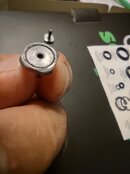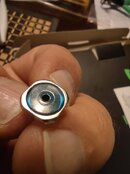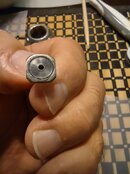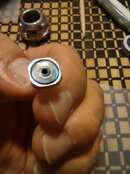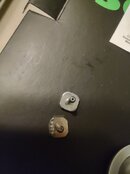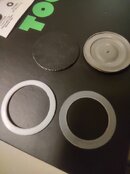SealFashion
Registered
So recently I purchased a rebuild kit for my Us Divers SE3 Conshelf.
I received the parts quickly (yesterday afternoon) and as I had already cleaned and prepared for the build I was ready to install these immediately.
As I inspected the parts I focused on the HP seat and I was sort of thrown for a loop.
When comparing the "new" HP seat to the factory original coming out of the regulator I felt as if the 20+yr old original was pretty darn close to being better than the "new" one I just received.
It seems the stem on the "new" was an old stem that had seen much better days and this one had the sealing material replaced.
So....I am not against using "refurbished" parts...as long as the refurbishing brings the part into a like new condition.
Reason why I am concerned is that the HP seat is the only thing that comes into contact with the volcano orifice.
If the face of the HP seat is marred I worry it may damage the volcano orifice.....or am I just being paranoid.
Images attached...the original HP seat is the one with the blue seal material and also has part number on it.
....also the diaphragm retainer ring seems smaller than the factory original....is this normal?
Any and all opinions are welcome
I received the parts quickly (yesterday afternoon) and as I had already cleaned and prepared for the build I was ready to install these immediately.
As I inspected the parts I focused on the HP seat and I was sort of thrown for a loop.
When comparing the "new" HP seat to the factory original coming out of the regulator I felt as if the 20+yr old original was pretty darn close to being better than the "new" one I just received.
It seems the stem on the "new" was an old stem that had seen much better days and this one had the sealing material replaced.
So....I am not against using "refurbished" parts...as long as the refurbishing brings the part into a like new condition.
Reason why I am concerned is that the HP seat is the only thing that comes into contact with the volcano orifice.
If the face of the HP seat is marred I worry it may damage the volcano orifice.....or am I just being paranoid.
Images attached...the original HP seat is the one with the blue seal material and also has part number on it.
....also the diaphragm retainer ring seems smaller than the factory original....is this normal?
Any and all opinions are welcome




